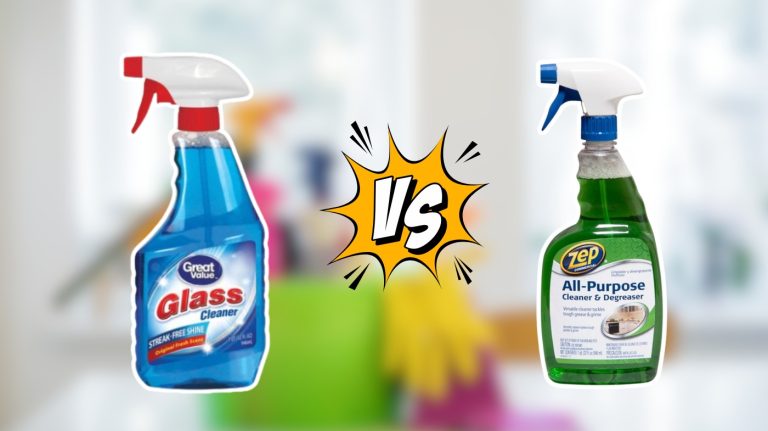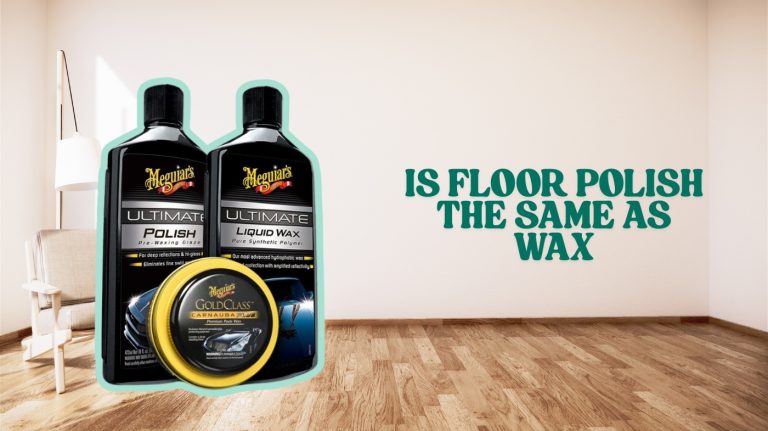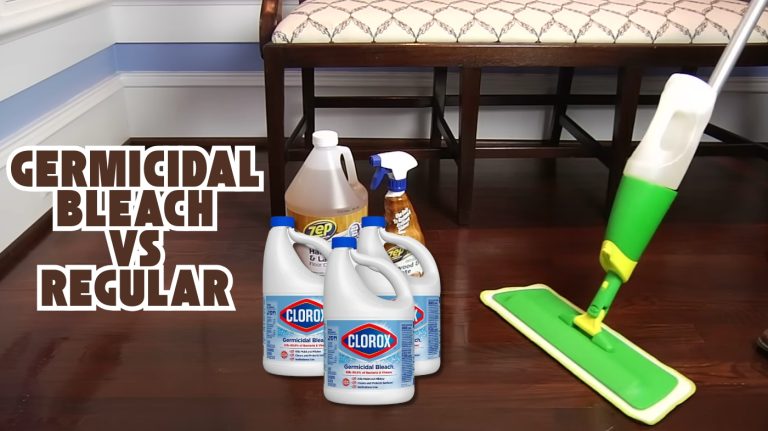Air Sanitizer vs Air Purifier: Key Differences Explained
You’ll find air purifiers physically trap particles like dust and pollen using HEPA filters, capturing 99.97% of particles ≥0.3 microns but need regular filter changes.
Air sanitizers actively destroy airborne microbes through UV-C light and oxidation, targeting viruses and bacteria more effectively without heavy filtration.
Each has unique strengths: purifiers excel at allergen removal, sanitizers excel at microbial neutralization.
Understanding their differences helps you choose the best solution; further details explain their operation, maintenance, and ideal use.
- 𝗥𝗘𝗠𝗢𝗩𝗘 𝗣𝗢𝗟𝗟𝗨𝗧𝗔𝗡𝗧𝗦…
- 𝗛𝗘𝗟𝗣 𝗠𝗔𝗞𝗘 𝗢𝗗𝗢𝗥𝗦 𝗢𝗗𝗢𝗥𝗟𝗘𝗦𝗦: The…
- 𝗨𝗦𝗘 𝗜𝗧 𝗔𝗡𝗬𝗪𝗛𝗘𝗥𝗘: With the Levoit Core Mini-P air purifiers…
- LYSOL AIR SANITIZING SPRAY: Scent can’t sanitize—but Lysol Air Sanitizer can; The first EPA…
- ODOR ELIMINATOR SPRAY: Lysol Air Sanitizer spray doesn’t mask unpleasant smells, it eliminates odors…
- HELP PROTECT YOUR FAMILY: Lysol air sanitizing spray helps to reduce the spread of illness-causing…
Key Takeaways
- Air purifiers use HEPA filters to physically trap ≥0.3-micron particles like dust, pollen, and pet dander, improving allergen removal.
- Air sanitizers employ UV-C light and hydroxyl radicals to actively kill bacteria, viruses, and mold, neutralizing airborne pathogens effectively.
- Purifiers require regular filter replacements and cleaning to maintain effectiveness and prevent microbial growth on filters.
- Sanitizers generally have lower maintenance needs but depend on proper airflow and exposure time for microbial destruction.
- Combining air purifiers and sanitizers offers optimal indoor air quality by removing allergens and inactivating harmful microorganisms simultaneously.
Comparison Table for Air Sanitizer and Air Purifier
| Feature | Air Purifier | Air Sanitizer |
|---|---|---|
| Primary Function | Physical filtration of particles and allergens | Active destruction of microorganisms and pathogens |
| Technology Used | HEPA filters, activated carbon, ionic filtration, UV lamps | UV-C light, hydroxyl radicals, plasma technology, ionization |
| Particle Removal | Captures 99.97% of particles ≥0.3 microns including dust, pollen, pet dander | Limited particle removal; focuses on microbial neutralization |
| Pathogen Control | Traps pathogens but doesn’t kill them; risk of viability if filters not replaced | Actively kills bacteria, viruses, and mold by damaging DNA/RNA |
| Allergen Effectiveness | Excellent at removing airborne allergens like dust and pollen | Limited effectiveness against allergens |
| Maintenance Requirements | High – requires regular filter replacements every few months | Low – occasional cleaning, no filter replacements needed |
| Ongoing Costs | Higher due to frequent filter replacements and disposal | Lower – minimal ongoing maintenance costs |
| Energy Consumption | 20-100 watts; higher consumption due to airflow resistance | 20-100 watts; may draw extra power for UV lamps |
| Lifespan | 5-10 years for main unit; filters need replacement every 6-18 months | 1-2 years for core components like UV lamps |
| Odor Removal | Good with activated carbon filters that chemically bind odor molecules | Moderate through molecular breakdown; UV-C ineffective for odors |
| Health Benefits | Reduces respiratory issues from allergens; improves air quality | Reduces infection risks by eliminating pathogens |
| Humidity Impact | No effect on indoor humidity levels | No effect on indoor humidity levels |
| Noise Level | Varies by model; fan operation creates some noise | Varies by model; generally quieter operation |
| Safety Considerations | Generally safe with proper maintenance | UV-C exposure risks if not properly contained; potential ozone production |
| Best Use Cases | Homes with allergies, asthma, dust issues | Healthcare settings, homes needing pathogen control |
| Particle Size Range | Effective for particles ≥0.3 microns | Can target particles down to 0.01 microns |
| Continuous Operation | Recommended for consistent air quality | Essential for effective microbial neutralization |
Air Purifier Technology
While many people think of air purifiers simply as devices that clean air, understanding their underlying technology reveals a complex system designed to target specific pollutants.
You’ll find that most purifiers use multiple filtration stages: HEPA filters capture 99.97% of particles down to 0.3 microns, including dust and pollen.
Activated carbon filters adsorb odors and chemical gases. Many advanced models combine these methods in a multistage filtration system for more comprehensive air cleaning.
Ionic filtration employs charged ions to agglomerate particles, causing them to settle or be trapped by collector plates. Ultraviolet lamps disrupt microbial DNA, reducing bacteria and mold presence and prolonging filter life.
Pre-filters trap larger debris, protecting finer filters from premature clogging. Using fast-acting solutions in air purification can enhance the rapid reduction of airborne contaminants.
Key components like fans circulate air efficiently, while sensors monitor quality to optimize performance. Maintenance, such as timely filter and UV lamp replacement, is essential to sustain purification efficacy.
How Air Sanitizers Work?
Because air sanitizers focus on neutralizing airborne pathogens rather than filtering particulates, they employ technologies like UV-C light and hydroxyl radicals to disrupt and destroy microorganisms.
You’ll find that most units use an internal fan to draw air through a UV-C chamber, where UV-C rays effectively damage microbial DNA and RNA, rendering bacteria, viruses, and mold spores inactive.
Advanced models generate hydroxyl radicals, which oxidize and decompose organic pollutants, enhancing pathogen destruction. Proper air circulation is important to ensure that sanitized air is effectively distributed throughout the environment.
The sanitized air is then expelled back into the environment, with noticeable reductions in microbial odors signaling effectiveness. These devices operate chemically free, making them ideal for sensitive settings.
However, continuous operation is essential, as their microbial neutralization doesn’t filter particulates and results aren’t visibly detected without specific sensors.
Additionally, combining UV-C technology with HEPA filters can improve overall air quality by also removing particulate pollutants.
Particle Removal Capabilities of Both Devices
You’ll find that air purifiers, especially those with HEPA filters, excel at capturing particles larger than 0.3 µm with up to 99.97% efficiency.
However, they may struggle with ultrafine particles and some pathogens. Air sanitizers, on the other hand, employ advanced technologies like plasma to target smaller particles and deactivate airborne pathogens more effectively.
Proper maintenance and regular cleaning of these devices ensure optimal performance and air quality.
Most air purifiers use fans to draw air through filters, trapping contaminants and recirculating cleaner air into the room, which is a key part of their functionality.
Particle Size Efficiency
Although air sanitizers and air purifiers both aim to improve indoor air quality, their particle removal capabilities differ considerably in efficiency and measurement standards.
You’ll find that filter-based purifiers, especially those with HEPA or ULPA filters, provide highly standardized and reproducible efficiencies, HEPA captures ≥99.97% of 0.3-micron particles, while ULPA exceeds 99.999% at 0.12 microns. Regular maintenance and filter replacement are crucial to sustain optimal purifier performance.
In contrast, air sanitizers rely on photocatalytic or ionization processes, which lack consistent, quantifiable particle removal data. Their effectiveness varies with exposure time and airflow, making efficiency less predictable.
While sanitizers may neutralize particles down to 0.01 microns, validated removal rates are scarce. It is important for users to be aware of available safety information and guidance regarding these devices to ensure proper use and effectiveness.
For precise control over particle size filtration, you’ll benefit more from filter-based purifiers that deliver measurable, repeatable performance across a broad size spectrum.
Pathogen Removal Effectiveness
Understanding particle size efficiency helps frame how air sanitizers and purifiers tackle pathogens in the air. Air purifiers physically capture 99.97% of particles larger than 0.3 microns using HEPA filters, effectively trapping bacteria, mold spores, and some viruses.
However, they collect rather than kill pathogens, risking viability if filters aren’t promptly replaced. HEPA filters, while effective, require regular maintenance to prevent becoming a source of contamination themselves due to particle buildup on the filter surface.
Regular upkeep and timely filter changes are essential to maintain optimal purifier performance and indoor air quality.
Air sanitizers, in contrast, inactivate pathogens by damaging their DNA or RNA through UV-C light, hydroxyl radicals, or plasma technology, destroying bacteria, viruses, and mold particles outright.
This destruction reduces pathogen spread risks associated with contaminated filters. The use of hydroxyl radicals in air sanitizers mimics natural atmospheric processes to safely and efficiently neutralize microorganisms.
While purifiers excel at filtering airborne allergens and odor particles, sanitizers offer broader-spectrum pathogen neutralization. Your choice should consider maintenance demands and room size to assure maximum pathogen removal and indoor air safety.
Effectiveness Against Allergens and Pathogens
When evaluating effectiveness against allergens and pathogens, air purifiers and air sanitizers employ distinct mechanisms tailored to different challenges.
Air purifiers rely on HEPA filters to physically capture allergens such as dust, pollen, and pet dander, effectively reducing airborne particles down to 0.3 microns.
In contrast, air sanitizers use UV light or ionization to actively kill bacteria, viruses, and mold, providing a deeper level of sanitization beyond filtration.
- Air purifiers excel at removing larger allergenic particles but may not eliminate all microscopic pathogens or gases.
- Air sanitizers neutralize pathogens by destroying microorganisms, reducing infection risks and sometimes sanitizing surfaces.
- Combined systems integrate filtration and sanitization technologies, optimizing both allergen removal and pathogen inactivation.
Choosing the right device depends on whether your primary concern is allergen reduction or pathogen elimination.
Proper maintenance, including regular cleaning and removal of residue with safe solutions like baking soda and vinegar, ensures optimal device performance and longevity.
Maintenance Requirements and Costs
Since air purifiers depend on HEPA filters to trap particulates, you’ll need to replace these filters regularly—often every few months depending on use, which adds ongoing maintenance tasks and costs.
HEPA filters can last up to 8,500 working hours, but eventual replacement is unavoidable, contributing to significant long-term expenses. Proper maintenance, including timely replacement, is essential to prevent reduced efficiency and potential filter clogging.
In contrast, air sanitizers typically utilize UV light or chemical methods, reducing or eliminating the need for filter replacements and therefore lowering maintenance frequency and costs. Air sanitizers require only occasional cleaning to maintain efficiency, simplifying upkeep.
Additionally, air purifier filters require proper disposal, increasing environmental impact and maintenance complexity.
While initial costs may be higher for UV air sanitizers, their reduced maintenance often results in lower total ownership costs compared to air purifiers, which demand frequent filter replacements and potential device renewal every 6–24 months.
Both systems may include automatic modes that can help optimize maintenance schedules and energy use.
Energy Consumption Comparison
Although both air purifiers and air sanitizers operate within similar wattage ranges, typically between 20 to 100 watts, their energy consumption varies depending on technology and usage patterns. You’ll find that:
- Air purifiers with HEPA filters often consume more energy due to airflow resistance, while UV-based sanitizers may draw extra power for germicidal lamps. Proper maintenance routines can help optimize energy use and device longevity.
- ENERGY STAR certified air purifiers run about 25% more efficiently, saving roughly 110 kWh annually, whereas many air sanitizers lack this certification.
- Using auto mode, timers, or smart sensors can notably reduce electricity use for both devices by optimizing operation based on air quality and room size.
- Regular maintenance, such as timely filter replacement, is essential to maintain peak efficiency and prevent increased energy consumption.
Your energy costs depend on device features, operating schedule, and local electricity rates, with continuous use leading to higher consumption in both cases.
Impact on Indoor Air Quality and Health
Understanding energy consumption is important, but the true value of air purifiers and air sanitizers lies in their impact on indoor air quality and health.
Air purifiers excel at removing airborne particulates like dust and pollen using HEPA filters that capture particles down to 0.3 microns, thereby reducing allergens and improving respiratory function.
However, they trap rather than neutralize pathogens, which can multiply on filters. Their operation involves multiple technologies such as HEPA, UV-C, activated carbon, and ionization to address allergens, odors, and pathogens.
Regular maintenance, including cleaning and replacing filters, is essential to prevent the growth of trapped microorganisms and ensure optimal air purifier performance.
Air purifiers capture fine particles like dust and pollen but do not neutralize pathogens, which may grow on filters.
In contrast, air sanitizers actively destroy microorganisms—including bacteria, mold, and viruses—using UV light or chemical agents, reducing both airborne and surface microbial loads. This germicidal action lowers infection risks and supports respiratory health.
Employing either device consistently enhances indoor air quality; purifiers reduce allergen exposure, while sanitizers provide direct antimicrobial effects, collectively fostering a healthier environment and reducing respiratory issues over time.
Choosing the Right Device for Your Needs
When selecting an air purifier and an air sanitizer, you should consider the specific air quality issues you want to address and the operational requirements of each device.
Air purifiers effectively remove dust and pollen using HEPA filters but may not capture all viruses or aerosols. Both devices contribute to reducing common allergy and asthma triggers, improving overall air quality.
Proper maintenance, such as regular cleaning and avoiding harsh chemicals, ensures their longevity and performance.
Air sanitizers, employing UV light or OH radicals, kill bacteria, viruses, and mold, providing deeper sanitization without frequent filter replacements.
- Air Quality Needs: Choose purifiers for particle removal and sanitizers for microbial elimination. Professional testing helps determine whether an air cleaner or purifier is suitable by identifying the specific contaminants present in your home (professional testing).
- Maintenance and Cost: Purifiers require costly filter changes; sanitizers have lower ongoing costs.
- Noise and Energy: Both vary in noise and efficiency—select models with noise reduction and energy-saving features to suit your environment. Ensuring proper ventilation during operation is also important to maintain safe indoor air quality (proper ventilation).
Frequently Asked Questions
Can Air Sanitizers and Purifiers Be Used Together Effectively?
Yes, you can use air sanitizers and purifiers together effectively. Combining them broadens pollutant removal—purifiers capture particulates while sanitizers inactivate pathogens.
Studies show this pairing can reduce aerosol exposure by up to 90%, especially with masking. However, device quality, placement, and maintenance affect performance.
Be aware some sanitizers may produce ozone, so choose certified models. Overall, layering these technologies enhances indoor air quality and health protection.
Are There Any Health Risks Associated With UV-Based Air Sanitizers?
Yes, you face health risks if UV-C light from air sanitizers isn’t properly contained. Direct exposure can cause skin redness and eye inflammation.
Long-term or repeated exposure might increase skin cancer risk. Also, UV sanitizers can produce ozone and reactive compounds, irritating your respiratory system, especially in poorly ventilated spaces.
To minimize risks, guarantee devices meet safety standards, use filtered Far-UVC lamps, and maintain proper installation and ventilation.
How Do These Devices Affect Humidity Levels Indoors?
Like the invisible hand of a clockmaker, these devices influence air quality without altering humidity’s steady rhythm. They neither add nor remove moisture from your indoor air.
While fans circulate air, moisture content stays constant. Filters and sanitizing mechanisms focus on cleanliness, not humidity control.
High humidity can impair filter efficiency, but the devices don’t manage moisture levels directly.
What Is the Typical Lifespan of an Air Sanitizer Compared to a Purifier?
You can expect an air sanitizer’s core components, like UV lamps or ionizers, to last about 1–2 years, depending on usage and environmental factors.
In contrast, air purifiers typically have a lifespan of 5–10 years, influenced by build quality and maintenance.
While purifier filters need replacing every 6–18 months, the main unit endures longer. Regular upkeep is essential to maintain both devices’ effectiveness and longevity.
Can These Devices Help Reduce Odors Besides Allergens and Pathogens?
You can reduce odors with certain devices, but effectiveness varies. Activated carbon filters chemically bind odor molecules, providing strong odor removal. Ionization technologies break down odors at the molecular level, offering moderate reduction. UV-C light mainly targets pathogens, so it’s ineffective for odors.
Ozone can oxidize odors but poses health risks. Your device’s performance depends on filter type, technology, airflow, and room size for ideal odor control.
Choose Based on Your Air Quality and Health Needs
When choosing between an air purifier and an air sanitizer, consider that air purifiers can remove up to 99.97% of particles as small as 0.3 microns, including allergens and some pathogens. Air sanitizers, however, focus on neutralizing microbes but may not filter particulates effectively.
Understanding these differences helps you select the right device for your needs, balancing particle removal, microbial control, maintenance, and energy use to improve your indoor air quality and health precisely.
- Cleans The Air You Breathe: Ozium Sanitizes And Deodorizes The Air, Temporarily Reducing Bacteria…
- Multi-Use Odor Eliminating Air Sanitizer: Ozium Eliminates Stubborn Odors And Offensive Everyday…
- Trusted & Validated: Trusted For Over 50 Years, Ozium Was Originally Developed To Combat Airborne…
- Powerful & Fast Purification: Experience rapid air cleaning with 4 complete Air Changes/Hour for…
- Advanced 3-Layer Filtration: Imported triple-stage filter captures pet dander, dust, pollen, smoke,…
- Versatile for Any Room: Enhance your living room, bedroom, study, office, apartment or kitchen with…
Last update on 2025-12-15 / Affiliate links / Images from Amazon Product Advertising API









